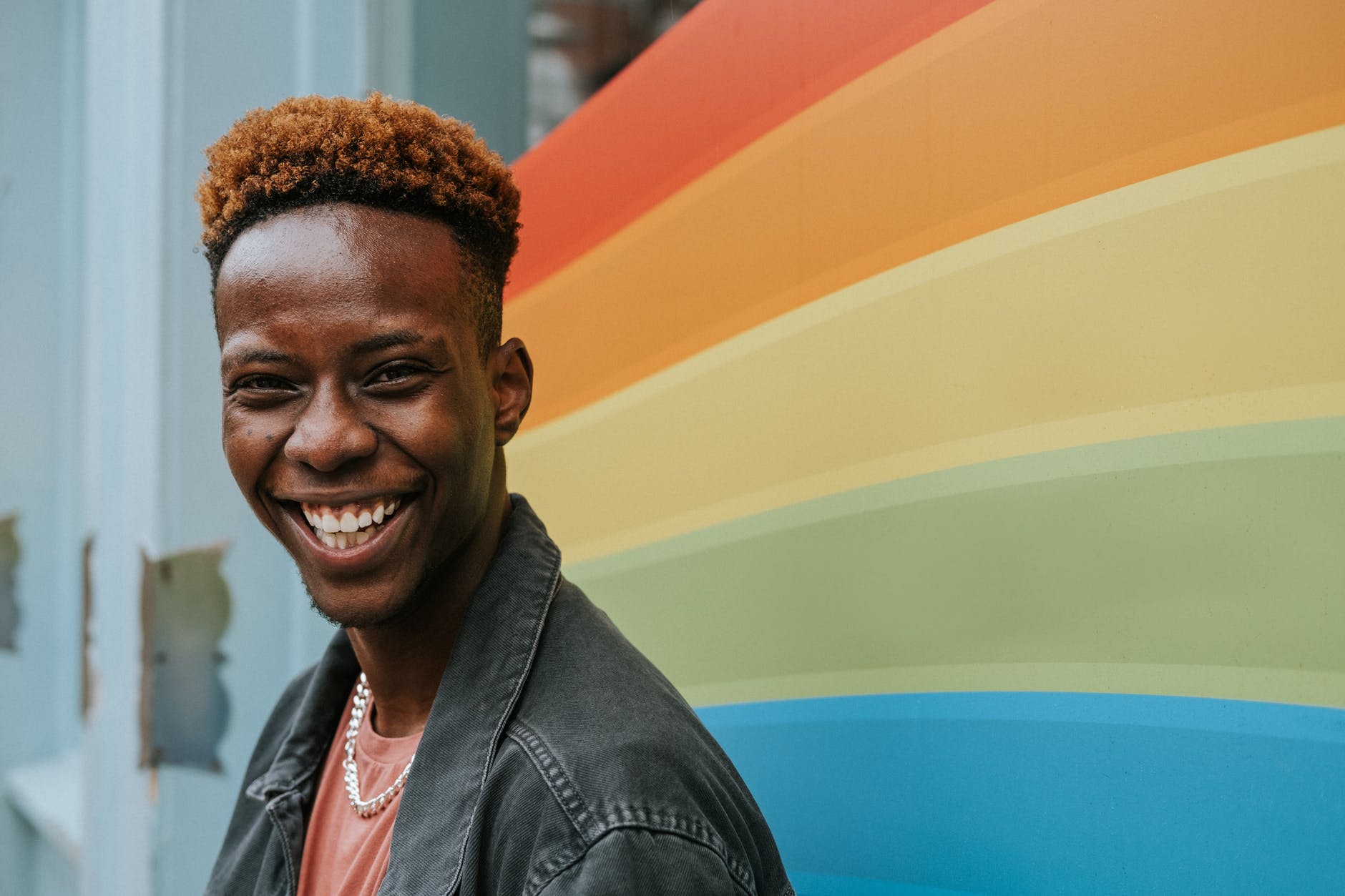By Nicole Akoukou Thompson | Guest Writer
Nearly a decade ago, the enigmatic actress and LGBT trailblazer Laverne Cox graced the cover of the June 2014 edition of TIME magazine. Clad in a navy blue bodycon dress, the copy beside her read, “The Transgender Tipping Point: America’s next civil rights frontier.” Her presence on the cover signified a move toward more gender-diverse characters and recognition of trans humanity and understanding.
There are 42 regular and recurring trans characters on the small screen and 17 additional characters who identify as nonbinary and not trans (approximately six percent of LGBTQ characters). There are also 26 trans characters and 11 nonbinary characters not played by transgender actors on streaming scripted series.
Of the 42 regular and recurring trans characters, a majority are white: 18 white characters (43 percent), nine Latinx characters (21 percent), six Black characters (14 percent), four who are Asian Pacific Islander (10 percent) and four (10 percent) who are multiracial or other ethnicities.
For the last few years, the media has served viewers with well-crafted transgender characters. The acclaimed FX series “Pose,” which aired its final episode in June 2021 and is now streaming on Hulu, had the largest trans cast in history.

The cast comprised Black and Latino characters, including Golden Globe-winning actress Michaela Jaé Rodriguez, the first trans actress to earn an Emmy Award nomination in a major acting category. Despite progress on the screen and off, the transgender revolution still has a long way to go eight years later.
Defining Terms in and out of the Binary
Gender identities differ from sexuality preferences entirely, as sexuality focuses on romantic or sexual attraction, regardless of gender identity.
Cisgender is a term referring to a person whose sense of personal and gender identity corresponds with their assigned sex at birth.
The term transgender or “trans” has been in use since the late 20th century and has been used broadly for those who identify differently from the sex assigned at birth. The diverse transgender community encompasses those who describe themselves as genderqueer, agender, gender non-conforming, bigender, nonbinary, and other identities.
According to the HRC Foundation and the University of Connecticut, roughly one-third of trans youth identified with terms other than boy or girl.
Whiplash-inducing Highs and Lows
On one hand, trans people continue to trend upward when it comes to media visibility. Films and television are missioned to feature characters that represent the widening spectrum of the human experience. For youth, seeing a trans character on the screen can help foster a greater sense of individual belonging.
CW’s “Supergirl” cast the first transgender superhero in 2018 with Nicole Maines portraying Nia Nal. More recently, Marvel Studios denounced all anti-LGBTQ laws and made a commitment to stand alongside the LGBTQ community.

On the other hand, violence continues to plague the trans community — particularly trans women of color — undermining the sentiment of security.
According to some of the most recent data, 1.4 million Americans identify as transgender – still less than one percent of the population as of 2016, though research shows that future surveys might capture higher numbers. Only about 30 percent of Americans personally know a trans person as of that same year, increasing the risk of misunderstanding, discrimination, and even violence against trans people.
This discrimination is taking effect on a state level across the majority of the United States, though certain officials have pledged to veto oppressive legislation.
California lawmakers have also proposed protections for transgender youth traveling from states that are threatening punitive actions and criminalization when youth pursue transition-related care. The bill would reject any out-of-state court judgments removing transgender minors.

Living Honestly
“To be trans in 2022 at least for me is to be genuinely honest with myself and to the world,” anonymous interviewer (she/they) tells Intersected. She recently separated from the United States Air Force and is returning to school to complete a degree in robotics.
“People tend to put up masks to function in a very cis-dominant society. However, as time passes, I’d like to think society should progress more towards acceptance.
“However,” she continues, “having been in the military and experiencing racial and gender discrimination, that’s certainly not the case. I am honestly trying to live my best life, but it also feels like I have a target on my back. When I was in the military, I didn’t know what was more dangerous, the ‘bad guys’ I was fighting against or the military-industrial complex that hated me just for existing.
“Even being out as a regular person again, I constantly see policies being put in place to put LGBTQ people in harrowing positions… Being an Asian American trans woman who served gives me a unique perspective I’d like to use to better connect people and push for better care within my community,” they concludes.
One way people build their perceptions of self and others – perceptions that influence real life interactions, to the level of voting and policy – is through the media. Increasing positive representations of trans characters helps build equity for people who have been underrepresented or negatively portrayed in the past.
Calls to Action
Gender identity is complex but simplified by respecting an individual‘s gender identity and pronouns regardless of their anatomy. Something as simple as using someone’s personal pronouns is evidenced to reduce suicide attempts.
Being friends with trans folks in your school or workplace and giving gender affirming compliments can go a long way toward making someone feel seen and supported as well.
Within the fashion industry, models are standing for justice against bills that oppress trans people, using their platform to visually and economically support the community. This is something that everyone from influencers to those with hiring power can emulate as well.
Casting trans actors for trans roles is another way to empower the queer community within media. Giving voice and vision to queer experiences via media can help others put words to what they are already going through themselves. In a world hostile to their very existence, this representation validates their identities and sends the message that they belong here.


One thought on “Past the transgender tipping point: a look at media”